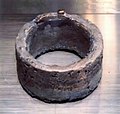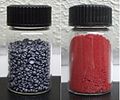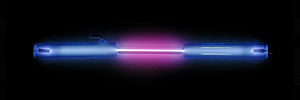The alkali metals consist of the chemical elements lithium (Li), sodium (Na), potassium (K), rubidium (Rb), caesium (Cs), and francium (Fr). Together with...
214 KB (23,508 words) - 15:09, 23 August 2024
Iodine-131 (category Isotopes of iodine)
half-life longer than hours, since most lighter isotopes of tellurium become heavier stable isotopes, or else stable iodine or xenon. However, the heaviest...
38 KB (4,361 words) - 19:57, 8 September 2024
Praseodymium (section Isotopes)
isotopes lighter than 141Pr is positron emission or electron capture to isotopes of cerium, while that of heavier isotopes is beta decay to isotopes of...
37 KB (4,830 words) - 15:00, 19 August 2024
Plutonium (section Isotopes and nucleosynthesis)
known isotopes of plutonium range in mass number from 228 to 247. The main decay modes of isotopes with mass numbers lower than the most stable isotope, 244Pu...
139 KB (14,903 words) - 06:55, 24 August 2024
substances and investigations into isotopes". 1922: Aston receives the Nobel Prize in Chemistry "for his discovery of isotopes in a large number of non-radioactive...
29 KB (3,578 words) - 02:25, 24 August 2024
This list contains fictional chemical elements, materials, isotopes or subatomic particles that either a) play a major role in a notable work of fiction...
100 KB (2,149 words) - 06:13, 9 September 2024
Soapstone Soda niter sodium Sodium bicarbonate Sodium carbonate Sodium chloride Sodium citrate Sodium cyanide Sodium hydroxide Sodium hypochlorite solid...
23 KB (1,949 words) - 12:24, 30 July 2024
























